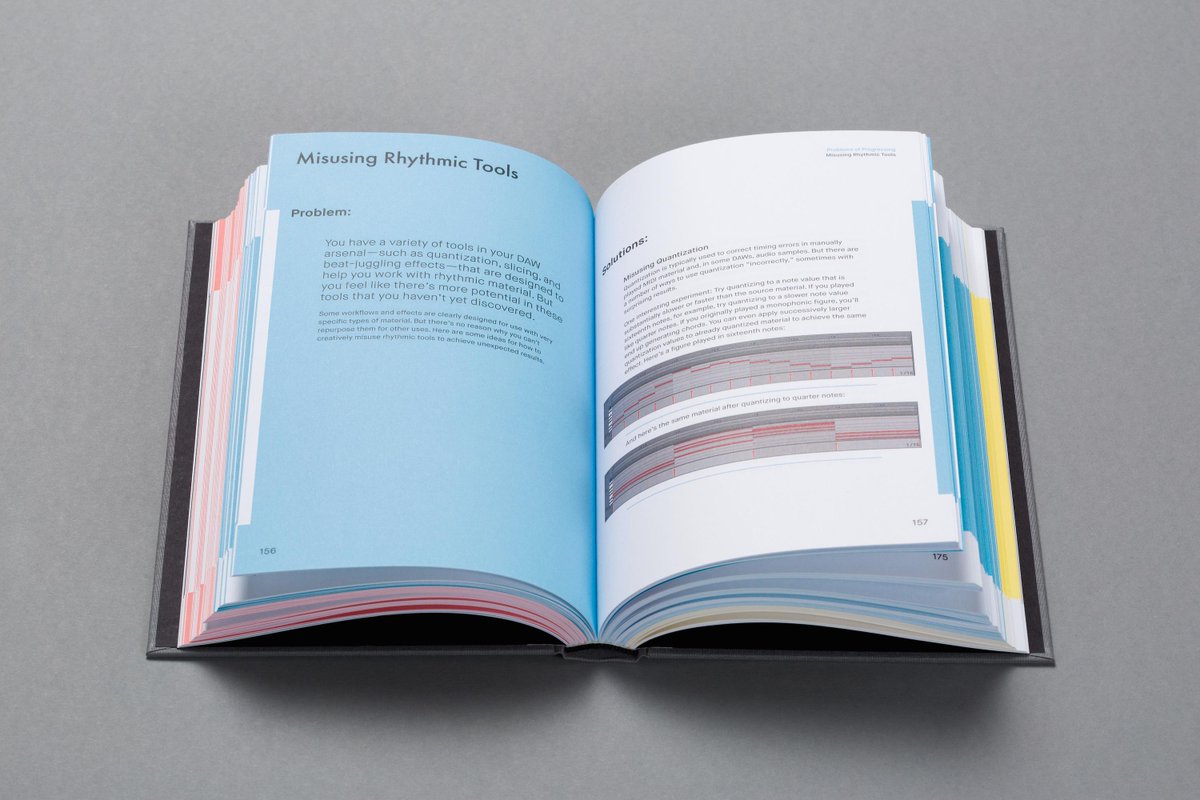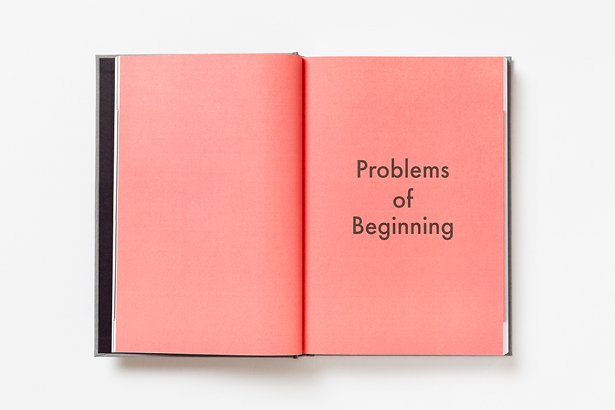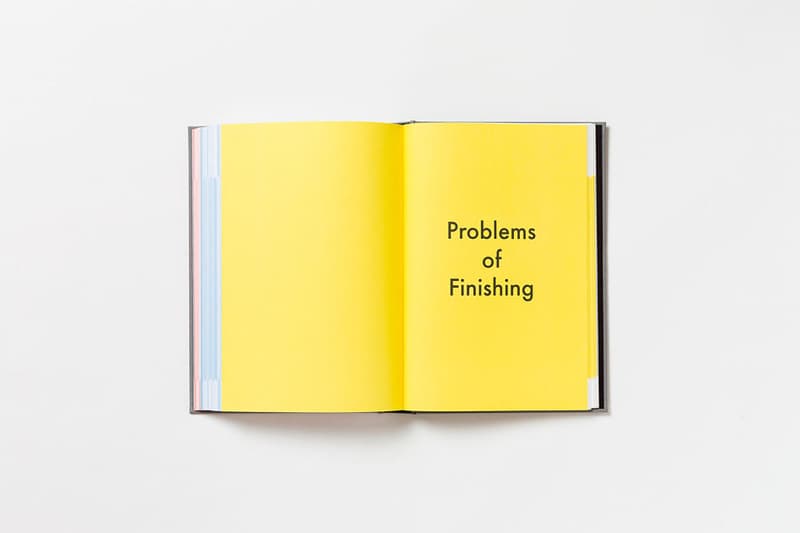Is Ableton's 'Making Music' book worth it?
Posted by James Cullen on
If you’re an avid follower of all things Ableton, chances are you’ve seen (or have at least heard of) their book, Making Music. Or to use its full title: Making Music: 74 Creative Strategies for Electronic Music Producers by Dennis DeSantis.
DeSantis is head of documentation over at Ableton, is a Doctor of Musical Arts and if that isn’t already impressive enough, he’s also a composer, sound designer, author, and percussionist.
As the title suggests, the book is full of various techniques, strategies, tips and tricks to aid you in the production of your own music. It covers a wide range of topics, from creative ways to begin music, or tips for when you’re feeling stuck. DeSantis stresses that while an extensive and wide variety of resources exist online that focus on production, there are less so that focus on the composition.
For example, there are plenty of tutorials on how to create certain synth sounds, or how to use a compressor, or EQ. Anything technical seems to have an abundance of resources dedicated to it, whether it's online articles, YouTube tutorials or magazines. He wanted to create this book with a focus more so on the musical side of music production.
If you haven’t heard of it, or just haven’t had a chance to pick a copy up yet, fear not. In this article with Top Music Arts, we will take a look at Making Music and explore some of the wider points it discusses. We will also take a look at a few examples of the content, which should hopefully give you an overall view of whether or not it’s worth adding to your collection of production aids.
So, without further ado, let’s get into it.
What is Making Music about?

DeSantis prefaces the book by explaining the struggle that I’m sure many of you are familiar with; the pressure and existential fear that often comes with actually sitting down to make some music!
It’s all well and good having ideas when you’re away from your computer, or when you’re stuck doing a boring job at work and you’d give anything to be in your studio working on an idea you’ve just come up with, but often as producers we can find that when it actually comes down to sitting at our DAW of choice, a form of musical writer’s block can overcome us.
The problem, DeSantis continues, is that in a world where we are inundated with countless hours of tutorials on YouTube as well as thousands of easily available and affordable apps and software options with which to make music, there can be a huge sense of pressure that goes along with it, which can often serve to stifle creativity.
The playing field has been levelled; there are fewer excuses to hide behind as to why you may not be making the music you want to make.
Why is making music still so difficult for many of us?
He concludes the preface by saying:

So, it’s definitely a familiar problem, and DeSantis comes up with some pretty unfamiliar and inventive solutions to help you overcome the difficulties. Let's explore some of them.
Look for the patterns.

Making Music presents its Creative Strategies as patterns -a suitable piece of jargon that fits well with music production; we’re all familiar with musical patterns in one form or another.
These patterns are presented with a Problem > Examples > Solution & Explanation format. The format is incredibly useful, as it finds a concise way to put into words the frustrations and pitfalls that often come with trying (and failing) to make music you’re happy with, especially since these problems aren’t always easy to get your head around or pin down in the first place.
You can feel frustrated that you can’t seem to come up with an idea you’re wanting to pursue. You feel stuck, but you aren’t always sure why that’s the case and what’s actually stopping you from progressing.
DeSantis explains the target audience for his book as anyone who ‘makes original music with a computer’. He emphasises that it’s for machine based composers mainly, as a lot of the strategies tie directly to workflows found within DAWs, with specific focus given to -as you may have guessed- Ableton. His main emphasis, though, is that this book is for musicians who often find themselves struggling to complete their musical projects.
Does this sound like you?
Each problem or roadblock is stated in as much detail as possible, and they pertain to real world situations you’re likely to come across when writing your own music. These are then expanded on with examples, and a solution is presented with instructions and suggestions for how to overcome the problem.
Note that it won’t be telling you what music to make, or exactly what to do in a rigid sense. What it offers is more so a collection of theories and practices you can apply to your own workflow. If you’re concerned about your music sounding the same as anyone else’s who tried this book, then don’t worry, it won’t!
Beginnings

The first section of Making Music is labelled ‘Problems of Beginning’.
As the name suggests, this is an area that focuses on the common problems and traps that are so easy to fall into when you first open up your DAW. You decide you want to make some music, or you head into your studio at your scheduled time (if you have one) to work on some tracks, but nothing is happening. There’s no inspiration at all. We’ve all been there, haven’t we?
What can you do to alleviate this problem?
Making Music tackles this with more than 20 scenarios and examples. Let’s illustrate the point better by picking one at random.
Catalog of Attributes, Page 22
The Problem
In this example, DeSantis explores how as a musician, the boundary between homage and a downright rip off is often a blurry one. How can you, as a creative music producer, take influence from music you like, allow it to inform how you create your own music, but still retain a sense of originality so that the music you’re making is truly yours, imbued with your own identity and flavour?
All music we listen to will affect us on some level. As someone whose mind is attuned to the nuances of how music is constructed, you can’t help but pick up on the elements that make up a track, whether you’re actively listening or not.
This will all feed into your process when you make your own music.
The Solution:
The solution put forward in this scenario is a simple yet effective one, and that is, to listen.
DeSantis tells us to listen -over and again- to a piece of music that we want to use as a ‘Source’ for our productions. Listen intently until we can dissect the piece and create a detailed Catalog of its Attributes. Write notes on Melody, Harmony, Rhythm, Structure, Effects, Mixing. All of these affect how the music sounds.
Once this Catalog of Attributes feels complete, you can then discard the original song, and refer only to this catalog as your reference when creating your own piece of music. The key here is to create something that you can use as a template for your own reference, without having to refer back to the original recording, allowing yourself some distance between your music and the source track. It will have all the same qualities in terms of how it’s constructed, but it won’t be a musical rip off using the same ideas.
The above example is one of many that DeSantis offers in Making Music on the struggles of beginning a piece of music from scratch. It serves as a useful companion in this respect to help you when you may not necessarily feel inspiration, but still have the drive to create music. It’s also useful in the context of deciding what to borrow from your influences.
How many times have you listened to a track and heard something that’s so clearly referencing another track?
There’s a knack to achieving the balance, and DeSantis’ Catalog of Attributes is a good way to find it.
Progressing
The second section of Making Music focuses on problems of Progressing. So, you’ve created a starting point or an idea that you’re happy with, but you don’t know where to take it or how to develop into a fully fledged track. This is another set of Creative Strategies offered to aid you in this endeavour.
Again, let’s take another random pick from the book.
Fuzzy Boundaries, Page 124
The Problem
This one is somewhat simple. Often, the rigid boundaries by which a DAW traditionally divides music can feel stifling. You may have created an 8 or 16 bar loop that you feel has promise, but you aren’t sure how to add more nuance or structure to create a full song out of that idea.
The boundaries put in place by the strict rhythmic organisation of a DAW’s time grid can sometimes serve to only stifle this creativity and make everything seem decidedly inside the box. That is to say, it’s very difficult to think outside the box when everything is stuck inside it.
The Solution
For a simple problem comes a simple solution.
On such a harsh gap between sections, such as the line separating hte first 8 bars with the next, is often where the ends and beginnings of MIDI and Audio clips will meet. It seems like a sterile division, and this can often translate into how the music sounds.
The solution offered here is to experiment with these boundaries. Draw some parts’ endings back from the line, extend others beyond it. Create a fluidity that exists over this boundary. Cutting some parts and extending others can help nullify the effect of such rigid sectional structures that serve to trap your music in little boxes.
There are many other examples of how to progress your music within Making Music. DeSantis explores melody, rhythm and harmony, as well as techniques for creating variation using a number of solutions easily used within Ableton.
For many producers, it is this part of writing that brings the most problems. An idea is easy to create in many cases, but sticking with that idea and keeping the momentum and enthusiasm going to progress it from a small loop to becoming a fully formed piece of music is where the difficulties arise.
Endings

As I’m sure you will have been able to figure out by now, the final section of Making Music focuses on problems that arise during the final stages of creating a track. Many producers will be well versed in starting a track - think how many unfinished ideas or loops you have sitting in your DAW library folder? But when it comes to seeing it through to a finished product, complications can crop up.
It’s often said that being able to finish a piece of music is a much of an important skill in a producer’s repertoire as being able to start one is. DeSantis bears this in mind during this last section, and gives a whole host of innovative exercises and techniques that you can apply to your own productions in order to help polish them off.
One such example is below.
Unique Events, Page 322
The Problem
In this example, DeSantis offers a scenario. You’ve finished an arrangement that you’re happy with. You’ve included the right amount of nuance and variation that it sounds fresh, there are a variety of sections to keep the listener engaged, and he even makes references to our previous example Fuzzy Boundaries.
But, it still sounds like ‘Loop Music’ - that is; repetitive and fundamentally unfinished.
What can be done?
The Solution
This solution is presented as what DeSantis refers to as Unique Events. One time sounds or changes that offer a unique flavour to that particular phrase of your music.
He emphasises three different types; Single Events, Single Musical Gestures and Single Processing Gestures. Single Events refer to single sounds such as a sample or synth shot that stand out. They can be added to the arrangement to add a layer of unpredictability, as these can be done on an instrument that is otherwise not in the song, or at an odd place in terms of rhythm.
Single Musical Gestures are a slight variation or alteration on a phrase that is otherwise consistent throughout your music. It helps subvert the listener’s expectations, as it messes with the familiarity of the piece that’s already been established.
Similarly, a Single Processing Gesture is a dramatic or one time use or change of the effects applied in your track.
This is just one example of the many ways DeSantis offers to aid in finishing a composition, and they vary in their methods and approaches.
If you are a producer who often struggles to bring a track to completion, one or many of these techniques may help you.
So, is Making Music worth it?
We've now had a look at what the book contains, and specifically drawn a few examples to give you an idea of the style and content in a bit more detail. There's no doubt that it's useful, but the real question still remains.
Is it worth spending your money on it?

You should note that there are a selection of the book's chapters available in full at makingmusic.ableton.com, so if you're curious and would like to check it out in a bit more detail before deciding if you want to buy it, you can do so there. You won't get the full contents of course, but it's a good start if you're not convinced.
If like I am, you're a sucker for a well presented product, though, you may feel that the £22 asking price for Making Music is a small price to pay for such a useful and frankly beautifully crafted book. It's a hardback, and between the texture of the cover and the colours and style of the print, this is an essential for my studio library. It’s something of a superficial reason for praise, but you can’t beat when a product just looks good.
There have been countless times I've referred to it when I've been stuck on a track, and it allows a great level of insight into a selection of different methods or approaches that I may not have been able to think of on my own. It's very beneficial to have a catalog of strategies and techniques to aid you if you're stuck on a production problem.
Much like Brian Eno's Oblique Strategies -though decidedly more structured and specific- Making Music is an invaluable resource to help expand your creativity and music production potential. So it comes highly recommended from the team here at Top Music Arts.
We hope you enjoyed this review of Making Music: 74 Creative Strategies for Electronic Music Producers with Top Music Arts today. Make sure you stay tuned and check our site regularly for tutorials, production tips, Ableton templates, sample packs and more!